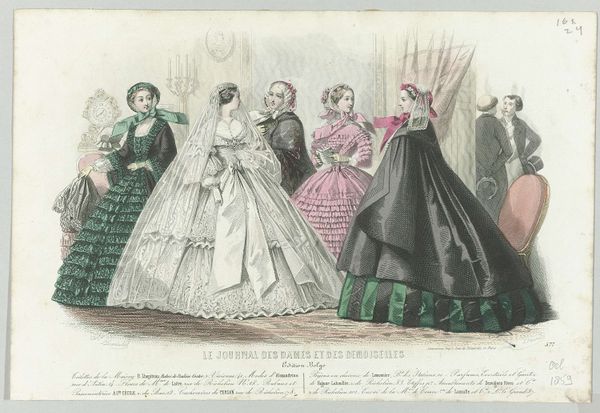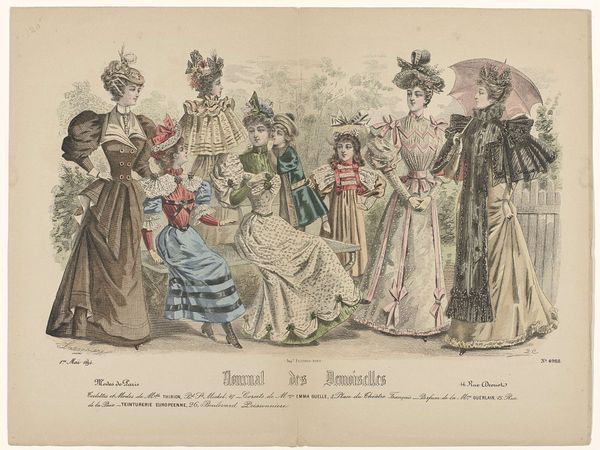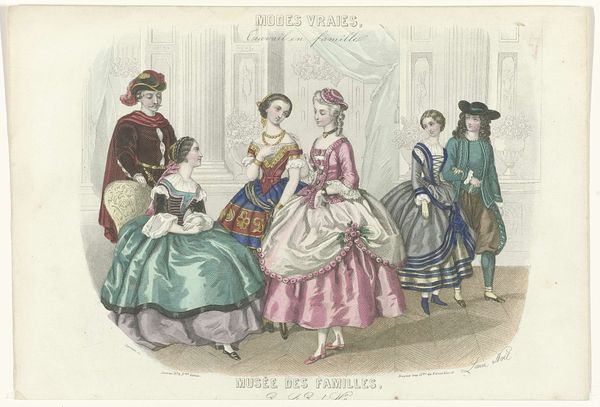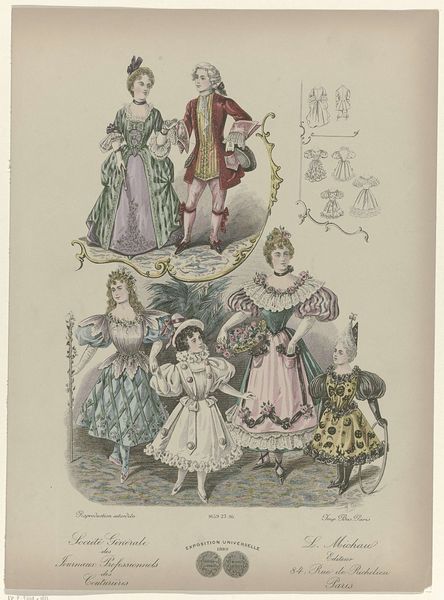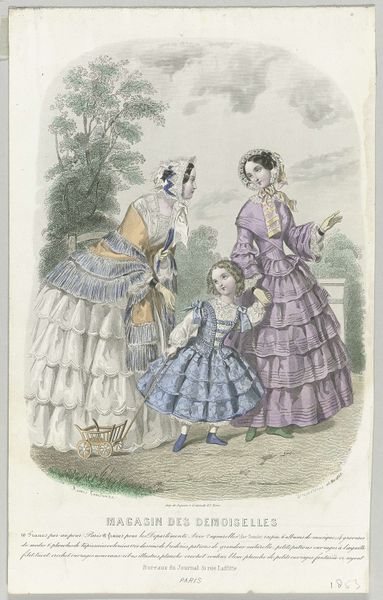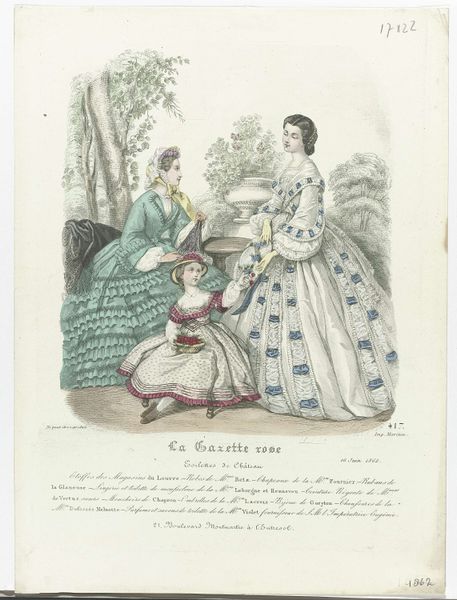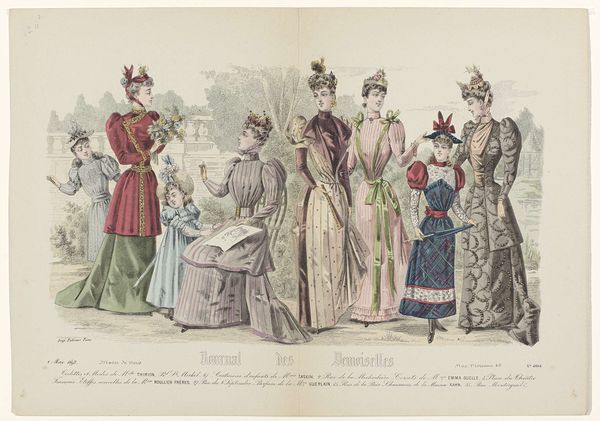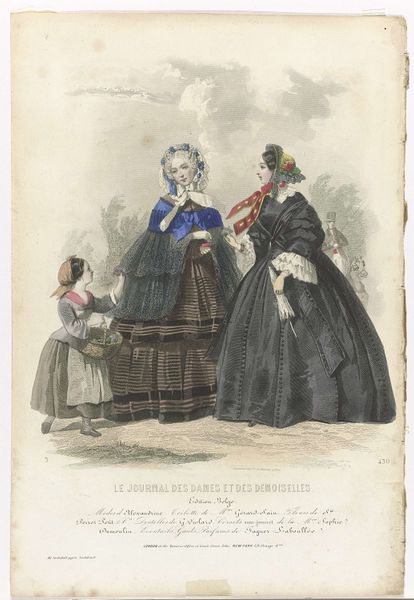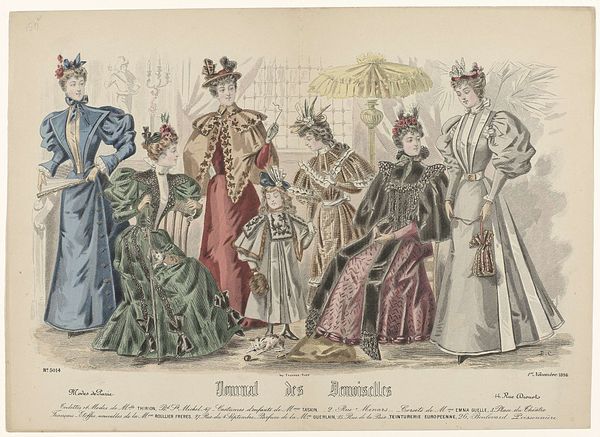
Dimensions: height 147 mm, width 219 mm
Copyright: Rijks Museum: Open Domain
Curator: Let's turn our attention to this print from 1857, titled "Allgemeine Musterzeitung, Beilage zur allgemeinen Musterzeitung, 1 juli 1857". It appears to be an engraving, likely a fashion plate, from a German periodical. Editor: Immediately striking is the almost oppressive amount of fabric. Look at those silhouettes! The skirts billow and cascade, and the overall effect is… well, heavy. Curator: Heavy, perhaps, both literally and figuratively. These elaborate dresses, and the restrictive expectations around female presentation at the time, served as visual markers of status and societal constraint. This print allows us to discuss how gender and class were not only constructed, but materially embodied. Consider the layers upon layers! Editor: Exactly! The sheer amount of labor involved in producing, maintaining, and wearing these garments is astonishing. Think about the weavers, the seamstresses, the laundresses – the invisible workforce supporting this display of bourgeois elegance. And that one seated at the center—look at all the lace trimming. It signifies luxury due to the painstaking, often hand-made process. Curator: Precisely. The gazes are directed forward but seem vacant, perhaps reflecting a certain societal role where appearance supersedes inner life. How does this artwork speak to intersectional ideas of wealth and its impact? Editor: Well, it is both a promotional object *and* an object of documentation, showing these patterns as commodities that can be replicated by middle-class households if they have access to these techniques. The print becomes less about displaying the ultimate unattainable luxury, and more about showing achievable fashions through accessible means. Curator: Yes, thinking about consumption changes the narrative here! It shifts away from a focus solely on aristocratic exclusivity. It’s about access, circulation and a burgeoning culture of desire fostered through print media. The magazine creates access while also perpetuating beauty standards. Editor: And let’s not forget the very *materiality* of this print itself. The engraving process, the paper, the ink – all these contribute to its survival and our ability to analyze its social implications today. It reminds us of how connected we all are. Curator: A crucial reminder. Fashion as a material manifestation of identity—a dialogue continued across time. I leave feeling reflective of the ways beauty standards still are shaped by accessibility and media in the 21st century. Editor: Indeed. It is the product and the labor it implies that linger in my mind after our talk, providing lasting points of reflection.
Comments
No comments
Be the first to comment and join the conversation on the ultimate creative platform.
